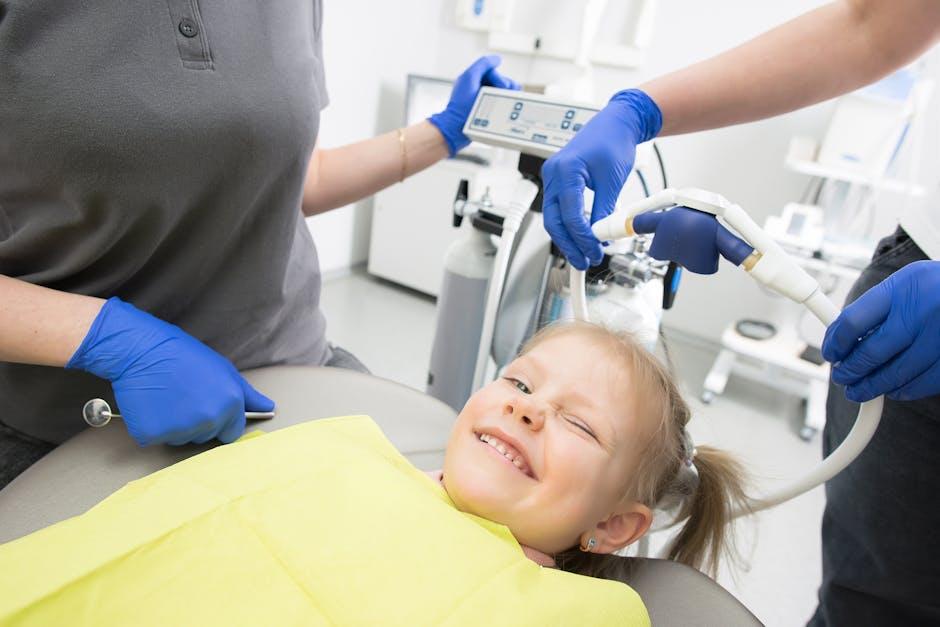
1 in 3 Kids Has Dental Problems, Poll Finds – U.S. News & World Report
Recent findings from a nationwide poll reveal a concerning trend: 1 in 3 kids in the United States is affected by dental problems. This statistic underscores the urgent need for awareness and proactive care when it comes to children’s oral health. In this comprehensive article, we will explore the causes behind this alarming rate, the importance of early dental care, practical tips for parents, and why maintaining dental health in childhood is crucial for lifelong wellness.
Understanding the Scope: Why Are So Many Kids Facing Dental Issues?
Dental problems in children range from cavities and tooth decay to gum disease and misalignment. According to the U.S. News & World Report poll, one-third of children have experienced some form of dental issue, making it a significant public health concern. There are several factors contributing to this trend:
- Poor dietary habits: High sugar intake from snacks and drinks accelerates tooth decay.
- Inadequate oral hygiene: Lack of consistent brushing and flossing routines.
- Limited access to dental care: Socioeconomic disparities leave many children without proper dental visits.
- Lack of parental awareness: Some parents underestimate the importance of early dental care.
Key Kids’ Dental Problems Highlighted in the Poll
| Dental Problem | Prevalence | Potential Causes |
|---|---|---|
| Cavities (Tooth Decay) | 24% | High sugar consumption, irregular brushing |
| Gum Inflammation (Gingivitis) | 7% | Poor oral hygiene, plaque buildup |
| Early Tooth Loss | 3% | Severe decay or injury |
The Importance of Early Dental Care for Children
Establishing healthy dental habits early in life is essential not only to prevent current problems but also to ensure a strong foundation for future oral health. Here’s why early dental care matters:
- Prevents cavities and infections: Regular check-ups and good hygiene reduce decay risk.
- Supports speech development: Healthy teeth help children develop proper pronunciation.
- Boosts self-esteem: A healthy smile encourages confidence and social interactions.
- Prepares for adult teeth: Early intervention can guide proper alignment and development.
Practical Tips: How Parents Can Protect Their Child’s Dental Health
Parents play the most critical role in combating this dental epidemic. Below are practical, actionable tips to help protect your child’s smile:
Daily Dental Hygiene Routine
- Start brushing as soon as the first tooth appears, using age-appropriate toothbrushes and fluoride toothpaste.
- Brush twice daily for two minutes each time — morning and before bed.
- Introduce flossing once two teeth touch to remove plaque between teeth.
Nutrition and Diet
- Limit sugary snacks, candies, soda, and juices high in sugar content.
- Encourage consumption of water, milk, and foods that naturally clean teeth, like apples and carrots.
- Avoid sticky snacks that linger on teeth and promote decay.
Regular Dental Visits
- Schedule the first dental visit by your child’s first birthday, or within six months after the first tooth emerges.
- Maintain at least biannual dental check-ups for professional cleaning and early problem detection.
- Discuss fluoride treatments and sealants with your dentist for additional protection.
Case Study: Turning Dental Health Around in a Community
One notable example comes from a community health program in Ohio, which focused on educating parents and providing free dental screenings in low-income neighborhoods. Over a 12-month period, the initiative resulted in:
- A 30% reduction in untreated dental cavities among children aged 3 to 8.
- Improved parental knowledge about brushing, flossing, and dietary risks.
- An increase in regular dental appointments by 45%.
This community-driven approach highlights the power of education and accessible dental care in lowering childhood dental problems.
Frequently Asked Questions (FAQs)
At what age should my child start seeing a dentist?
The American Academy of Pediatric Dentistry recommends the first dental visit by age 1 or within six months after the first tooth appears.
What are the signs of dental problems in kids?
Common signs include tooth pain, visible cavities, bleeding gums, bad breath, and difficulty chewing.
Can diet alone prevent cavities?
While diet plays a major role, combining healthy eating with proper brushing, flossing, and regular dental visits is essential for prevention.
Conclusion: Taking Action for a Brighter, Healthier Smile
The poll’s revelation that 1 in 3 kids in America has dental problems should serve as a wake-up call for families, communities, and policymakers alike. Dental health is a vital component of overall wellness, and its foundation is best laid from the earliest years.
Parents armed with knowledge and supported by regular dental care can help reduce the prevalence of childhood dental problems significantly. From encouraging good habits to addressing issues early, every step counts toward a healthier smile and future for our children.
Make dental health a priority today to ensure your child’s smile shines brightly tomorrow.


